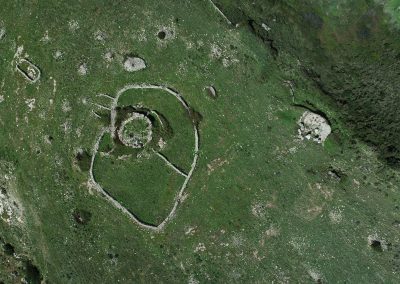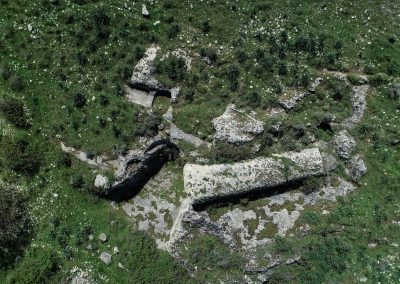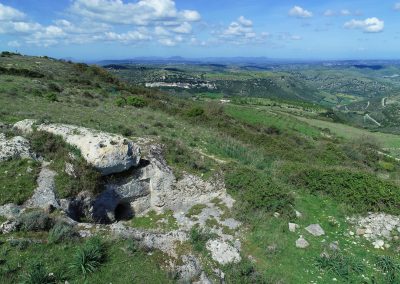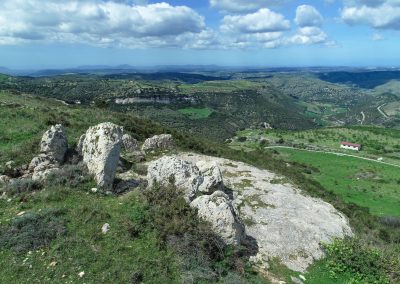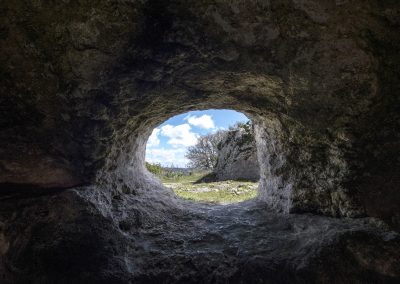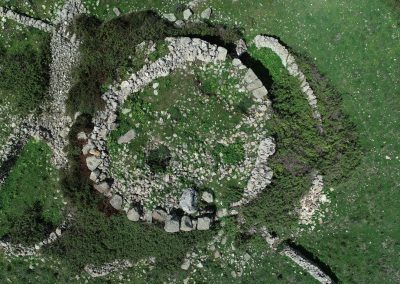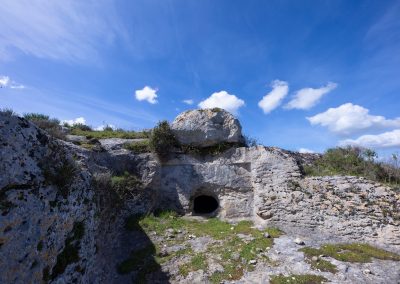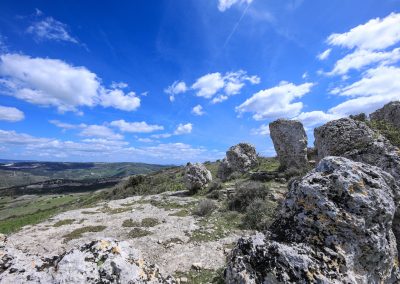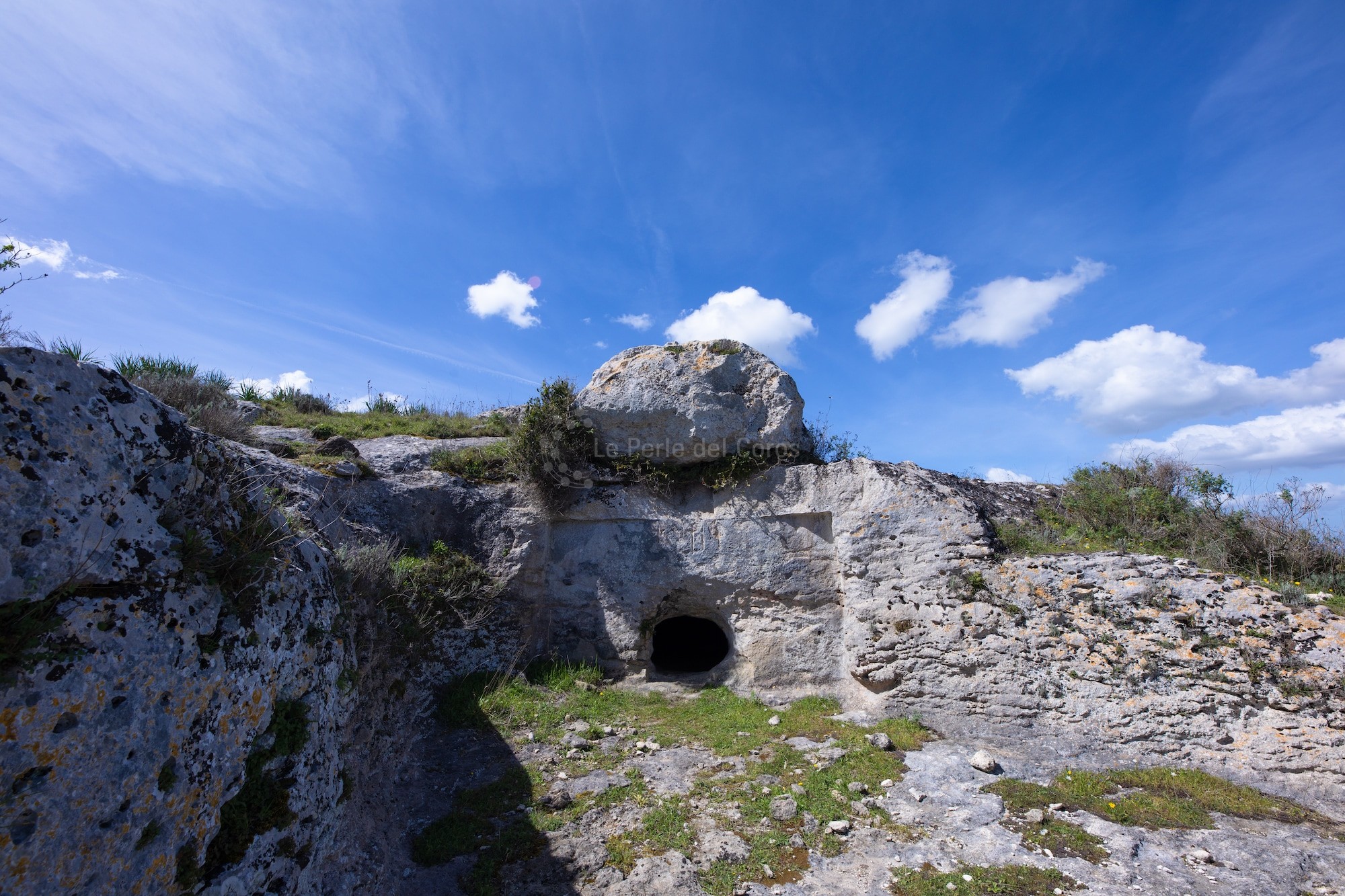
Ittiri
Sa Figu
The archaeological area of Sa Figu is the most important prehistoric heritage site in the territory of Ittiri and it is located about four kilometres from the inhabited area. It is made up of 13 hypogea, a nuraghe (tn* large megalithic, tower-shaped, prehistoric stone structures found in Sardinia, dating from the second millennium BC to the Roman conquest) and a megalithic circle. It is dated to the Late Neolithic and Middle Bronze Ages. Before reaching the area, we come across domus n. 5, a tomb with clear architectural structure, consisting of only one chamber, carved into an erratic block and shaped into a barrel. A little further on there is domus 8, also with only one chamber with a sub-elliptical plan. On its front is the remains of a representation of a stele, unfortunately in a bad state of conservation. Moving right from domus n. 8 you can reach the megalithic circle, a worship area of the Copper Age. It is made up of ten standing orthostates plus another stone lying in the centre of the area that has a semi-circular shape. At a short distance, on the left, there is a collapsed nuraghe with the typical features of a protonuraghe (tn* a style of megalithic building dating from the first half of the second millennium BC that precedes the classical nuraghe in Sardinia). Around the nuraghe (tn* large megalithic, tower-shaped, prehistoric stone structures found in Sardinia, dating from the second millennium BC to the Roman conquest), there are traces of what seems to be a village. Three hundred metres east from the nuraghe is tomb number 4, the most monumental. In fact, it displays an exedra on its front and a bipartite stele in the middle. Above the stele’s lunette we can see the three holes, typical of tombs with clear architectural structure. The wide funerary chamber is circular and has a flat vault. On the outside we find the considerable-sized tomb carved in rock, almost nine metres long and two metres wide. Behind the mound there is the single-chamber tomb n. 10, which collapsed. Above the exedra of domus n. 4, on the left, we can see the remains of tomb n. 9, originally multi-chambered, but damaged by the construction of tomb n. 4. Proceeding a few metres towards east, we find tomb n. 2. It has an architectural structure with two fragments of an arched stele in front of the entrance doorway and the remains of the exedra on the left. It comprises an ante-chamber and other two subsequent chambers. A few metres away from tomb n. 2, we can see tomb n. 3, comprising six chambers, which still has its stele’s superior lunette lying on the ground in front of it. A little further on is tomb n. 6, it comprises four chambers and is quite tampered. The entrance is obstructed by a big rock. Proceeding a little further east we find tomb n. 1, that once had five chambers; but today only one remains because of the demolition of the walls. Tomb n. 11 is a few metres east from domus n. 1, but remains almost entirely buried. Tomb n. 13 is located near tomb n. 11, but it isn’t very visible because it is below ground level. Tomb n. 7 is 150 metres south-west from tomb n. 13. It has been excavated on a wide rocky wall along the slopes of the eastern side of the plateau. It has an architectural structure of which only a modest exedra remains. In this nuragic complex several interesting artefacts have been found: copper needles, flat in the middle, like those used for crochet today, careened vases with ledge handles on the lower part, and a fragment of a bay-leaf shaped dagger. Also a new vase was found, made with an unknown technique of impressed dots, several fragments of pottery identical to those from the nuraghe Peppe Gallu, and a fragment of vase in the style of Monte Claro (tn* a pre-nuragic style of pottery that gets its name from mount Monte Claro, in Cagliari, where it was first found). Various elements suggest they are from circa 9th century BC.
To reach Sa Figu from the residential area of Ittiri, proceed towards Banari for 1800 metres, then turn right into an uphill dirt road near a drinking trough. After 1500 metres you will have to leave the car on side of the road and walk up to the top of the limestone plateau of Sa Figu, towards the megalithic circle.
Source: “Archaeological itineraries in the territory of Ittiri” (in Italian) by Gianni Canu, website of the Town Council of Ittiri; Periodical of Prehistoric Sciences directed by P. Graziosi, vol. XV 1960, Florence

